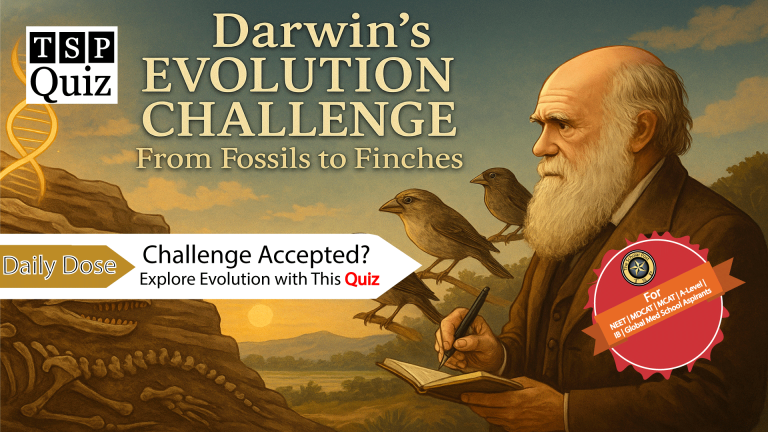Darwin’s Discovery Quiz – Foundations of Evolution, Fossils & Anatomy
Attempt Darwin’s Discovery Quiz
Test your knowledge of evolution and natural selection with our engaging Darwin’s Discovery Quiz based on Charles Darwin’s groundbreaking findings.
Note: For more fun and educational challenges, check out our full collection of quizzes here! MedTest Quizzes-Biology
Frequently Asked Questions (FAQs) on Darwin’s Theory of Evolution
Who is considered the father of modern evolutionary theory?
Charles Darwin is widely regarded as the father of modern evolution. He introduced the idea that species change over time through natural selection, where individuals with advantageous traits are more likely to survive and reproduce. His 1859 book On the Origin of Species transformed biological sciences.
What is the key concept behind Darwin’s theory of evolution?
The central idea is natural selection. Organisms that are better adapted to their environment survive longer and produce more offspring. Over time, these changes accumulate, leading to new species. This mechanism explains adaptation, variation, and speciation across generations.
How do fossils provide evidence for evolution?
Fossils, especially those found in sedimentary rocks, preserve the remains of ancient life. Morever, by arranging fossils chronologically, scientists observe gradual changes in species, confirming that life evolved over millions of years. Transitional fossils like Archaeopteryx link reptiles to birds, offering strong support for Darwin’s theory.
What do homologous and vestigial structures tell us about evolution?
Homologous structures, such as the limbs of humans and whales, indicate common ancestry despite different functions. In contrast, vestigial structures, like the human appendix, are evolutionary leftovers that once had a function. Both types of structures support the idea of descent with modification.
Why did Darwin delay publishing his theory of natural selection?
Darwin hesitated for over 20 years due to fear of religious backlash and scientific criticism. However, Alfred Wallace sent him a similar theory, prompting him to publish. Their joint presentation in 1858 laid the foundation for evolutionary biology.







